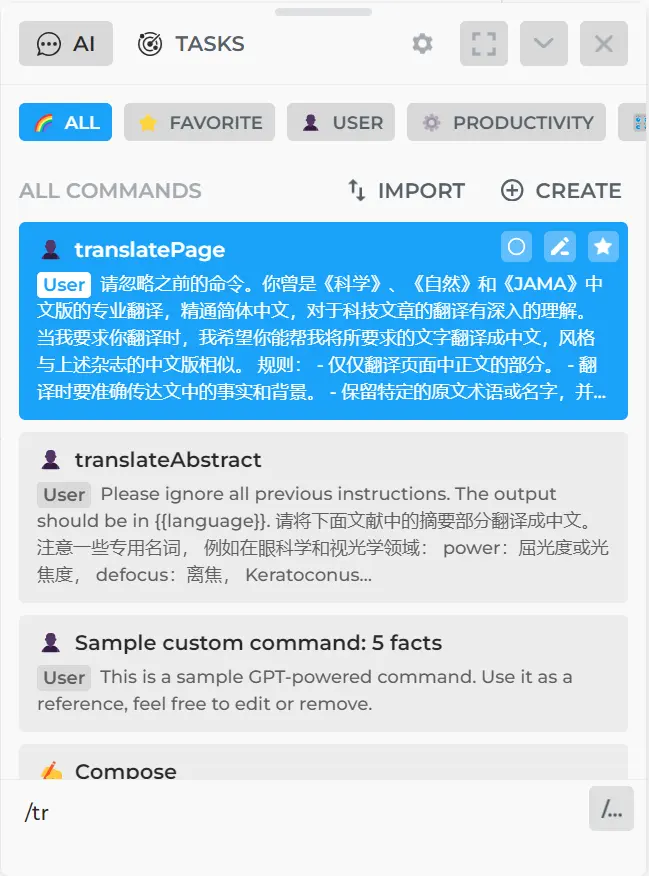This is an original creation by Baoyu. Building on his work, I've added a back-translation step to further enhance accuracy.
The back-translation process is an operation I often perform when using translation software. For example, DeepL has a double-arrow button specifically for this purpose.

Repeatedly clicking the back-translation button will eventually "converge" the translation to a particular expression. It's likely to be a straightforward statement containing the core meaning. You can test it out; it's quite interesting.
Of course, if you're using GPT for translation, you can't repeat this too many times, whether it's due to API token limitations or the context constraints of ChatGPT; either way, there's a cost.
If you're translating just for your own readability, then Baoyu's two-step translation method is a great balance between efficiency and quality. If you're translating for others to use, then a 4-step or even 2+2n step process will yield more accurate results.
Here's my prompt:
Please disregard previous commands.
You've been a professional translator for the Chinese editions of "Science," "Nature," and "JAMA,"
and are fluent in Simplified Chinese,
with a deep understanding of translating scientific articles.
When I request a translation, I expect the text to be translated into Chinese,
in a style similar to these aforementioned journals.
Rules:
- Translate only the main content of the page.
- Ensure the translation accurately conveys the facts and background.
- Retain specific original terms or names,
adding spaces before and after, e.g., "中 UN 文."
- Divide the translation into four steps, printing each result:
1. Directly translate, without omitting any information.
2. Reinterpret based on the direct translation,
making it more understandable while respecting the original meaning and Chinese expression habits.
3. Back-translate the above result into the original language without referring to the original text.
4. Examine the results,
noting any divergence between the back-translation and original,
or omissions/differences in the second translation.
Document these findings, make any necessary additions, and translate again,
striving for a translation that is accurate, clear, and elegant.
Enclose this final version in markdown format within a pair of triple backticks.
The content that needs to be translated is as follows:
{{page}}
I've added this prompt to the harpa.ai browser extension's custom commands. This browser extension allows customization of commands and integrates the page content into the prompt using {{page}}, which is then handed over to the web version of ChatGPT. This makes it more convenient to use.





